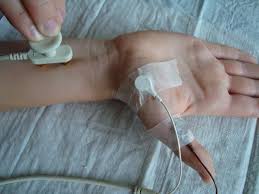Here is complete guide about electric shock treatment will be discussed.Electricity may damage the body in three ways: (1) Its effect upon the central nervous system or the heart may briefly stun the victim, produce reversible loss of consciousness or death. (2) The heat may coagulate tissue, with resultant necrosis. Arcing of the current may scorch or even metallized the skin, or there may be flame burns from clothing. (3) Powerful tetanic muscular contractions may lead to injury of bones or soft tissue.
Passage of electric current through the body may produce various effects, depending upon the intensity of the current, The latter in turn depends on the voltage and the resistance of the tissues, chiefly the skin. Skin resistance increases with thickness and is diminished by moisture. Perspiration, by reducing skin resistance to the flow of current through the body, is a factor in the higher fatality rate from electric shock observed during summer months.
What Harm can be taken place After Electric Shock
- Electric current diffuses through the body from the point of entrance to the point of exit, usually the feet. The entrance and exit sites may exhibit focal burns because the skin, in offering resistance to the passage of the current, converts electrical energy into heat. Perforations may be seen in clothing or shoes at the points of exit. Should the current enter and leave the body over wide areas of low resistance, as provided by water and good grounding, neither current marks nor burns will be found.
- If harmful effects are to be exerted on the heart, it must be in the pathway between the entrance and exit of the current. Once the skin barrier is penetrated, the body offers little resistance to the passage of current, and the waterways, the blood vessels, and intravascular spaces provide an excellent conduction system.
- Lightning is a special form of current characterized by a rapid discharge of enormous potential. The currents involved are of the order of thousands of millions of volts and an estimated 20,000 amperes, operating over an average time of 30 microsecond. Although capable of tremendously powerful disruptive force, lightning can be capricious, and is by no means invariably fatal. There are accounts of one person struck by lightning and merely stunned, while a companion who received the discharge from the elbow of the survivor was killed. Victims have had their clothes torn from them and been only stunned or rendered briefly unconscious. On the other hand, a “direct hit” can produce instantaneous death.
Clinical Manifestation
Electric shock may induce violent muscular spasms and immediate death. In some cases the patient survives the immediate shocking effect of the current but dies later of burns or blunt-force injury. Burns usually are limited to the skin, but with high intensity currents the damage may be deep and extensive, requiring amputation.’
Frequently, survivors of electric shock are in an acute state of fear, approaching panic. They are trembling, pale, and sweating.
Paralysis of an affected limb may persist up to four hours, and subsequent muscular pain and stiffness may continue for weeks r months as may mild personality changes. There are usually no permanent effects in those recovering from shock. It is rare to find late changes in the electrocardiogram. In severe burns, delayed hemorrhage must be watched for. Cataract formation days or months after the electrical accident has been recorded,
Electric Shock Treatment And First Aid Electric Shock
As soon as the victim is freed from the current, artificial respiration and external cardiac message should be started if spontaneous respiration has ceased. Both artificial respiration and artificial circulation should be maintained simultaneously until satisfactory central nervous system and cardiac function has returned. The mouth-to-mouth method of artificial respiration is employed. Reference should be made to publications of Jude, and their associates, who report successful resuscitation for their method, and outline the steps in treatment: to be followed:
(1) rapid diagnosis,
(2) artificial ventilation, and
(3) artificial circulation (external message),
(4) cardiogenic drug therapy,
(5) electrocardiogram,
(6) defibrillation if necessary
(7)continued cardiovascular and pulmonary support
(8) postresuscitation therapy.
The treatment of bums will depend on then” extent, but for bums confined to the skin a conservative approach is advocated.In high voltage electrical accidents, it is recommended that efforts to effect balkanization of the
urine be instituted at once. To those who are conscious, sodium bicarbonate can be given by mouth in doses of 4 to 6 grams of bicarbonate in about 300 ml of water every 15 minutes prior to hospitalization, when intravenous therapy may be instituted. necrosis with Liguria or anemia is a common complication, and calls for the usual treatment of renal failure, described elsewhere in this text.

